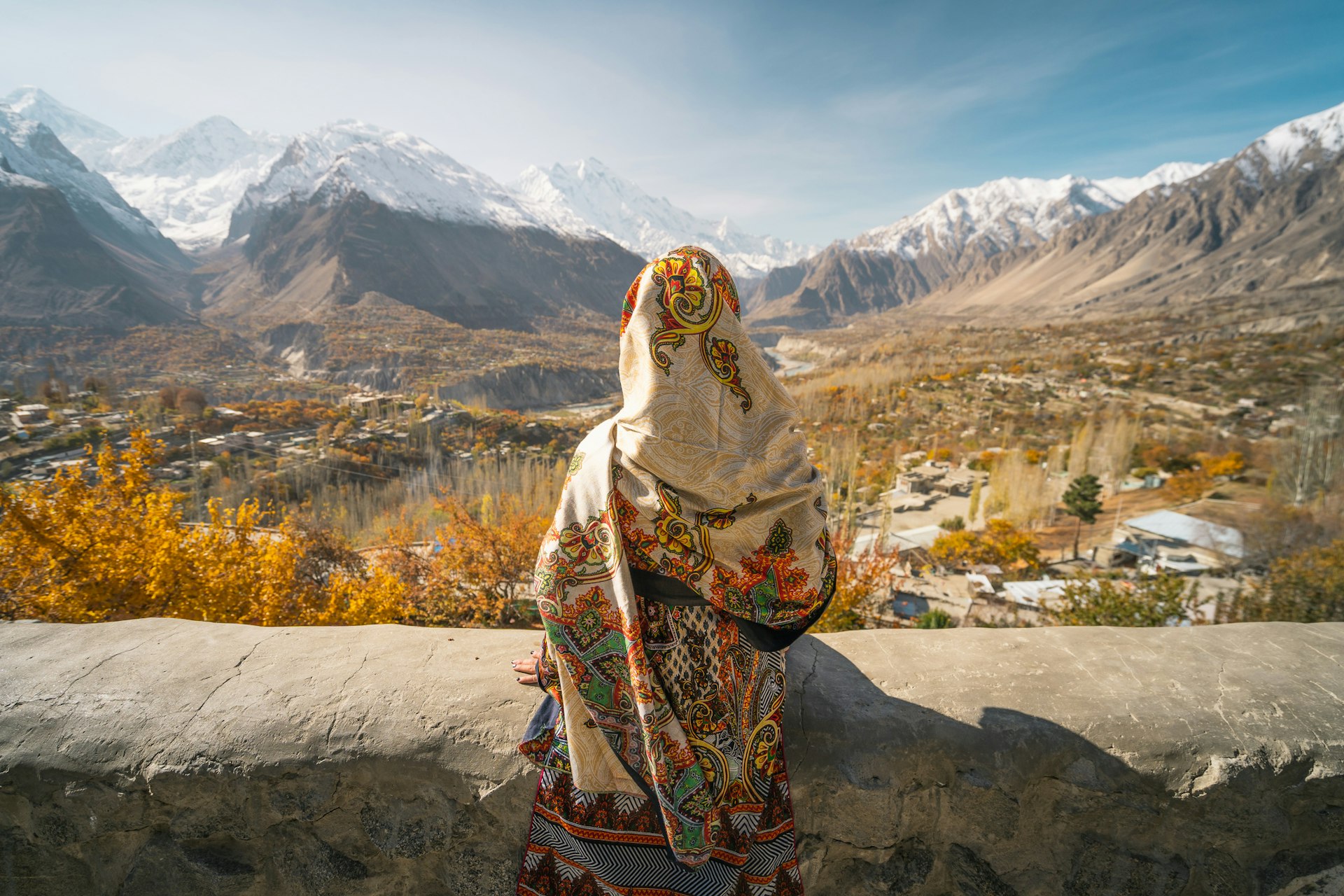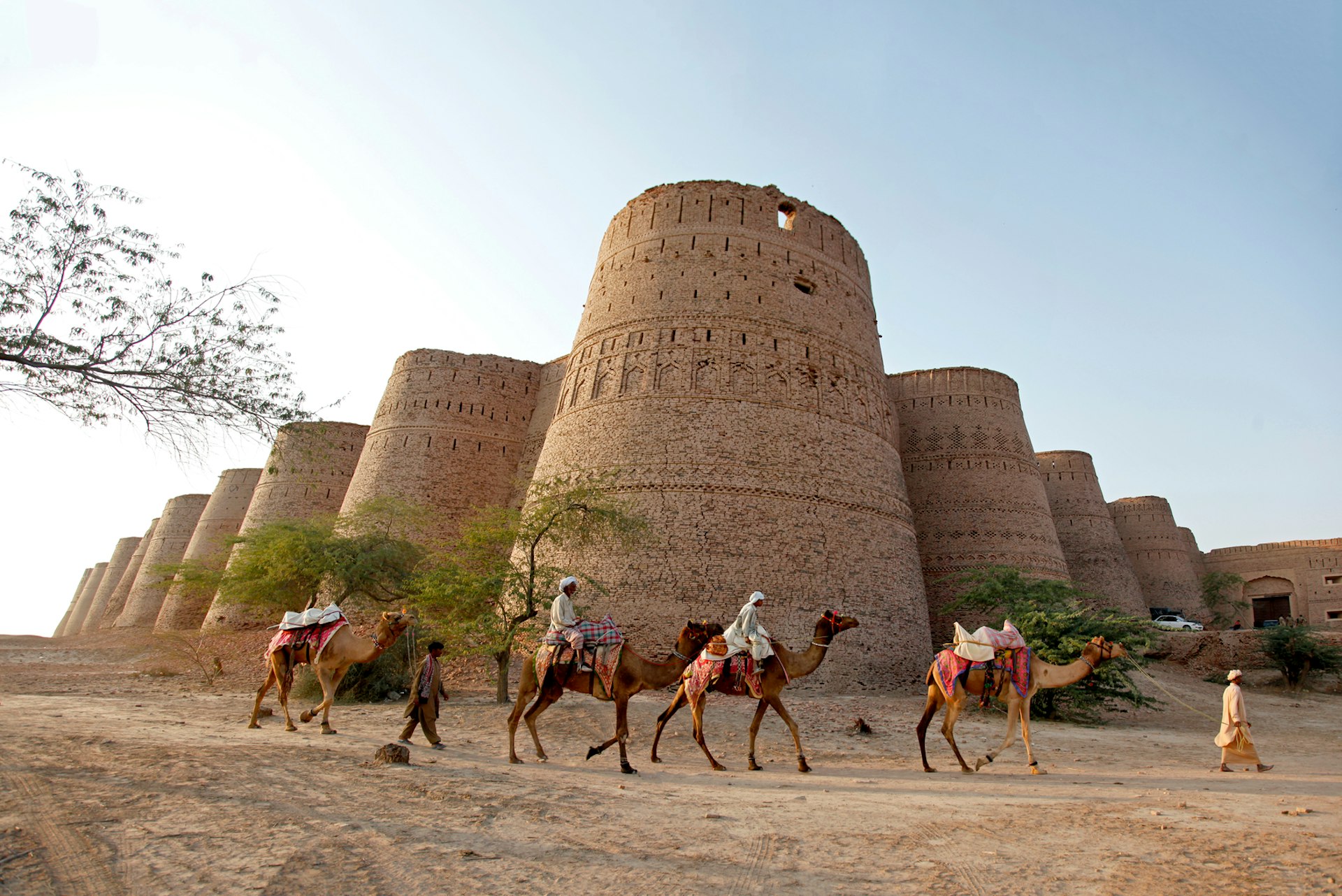Pakistan is one of the world’s great surprises, with an incredible diversity of scenery – from the world’s biggest mountain glaciers to the sparkling waters of the Indus River – alongside some of the most beautiful forts, mosques and archaeological sites in the Subcontinent. It is the cultural bridge between India and Central Asia and home to some of the most hospitable people you’ll ever meet.
It would, however, be fair to say that Pakistan has a mixed reputation beyond its borders. The country is beset with economic, political and security problems, but much has changed security-wise in recent years. An incredible welcome is guaranteed here, but this is also a destination that requires a bit of research in order to travel with confidence. Start your planning with the following essential travel tips.
1. Choose the right season for the areas you are visiting
Travel in Pakistan is strongly affected by the seasons. The summer months of July and August are the best time to visit the high mountains of the Karakoram and Hindu Kush ranges in the north, but this is also the busiest time for domestic tourism and it’s incredibly hot elsewhere in the country. If you want to explore the center, south and west of the country, consider a visit in spring (April and May) or autumn (October and November), especially if you don’t plan on going trekking. October brings fabulous fall colors to places like the Hunza Valley, whereas winter (November to February) is the best time to explore central and southern Pakistan.
Festivals worth planning your trip around include the Shandur Polo Festival in the second weekend of July, held atop the mountain pass between Hunza and Chitral, and the Chilam Joshi spring festival in the Kalash Valley in mid-May.
2. You’ll probably need a visa and letter of invitation to visit Pakistan
Most foreigners need a visa to enter Pakistan but you can apply online through the immigration department’s slightly glitchy e-visa system. You will also need a letter of invitation from a local hotel, your Pakistani host or a Pakistani travel agent to secure a visa, so give yourself enough time to get this document in place. Even if you don’t plan on taking a tour, travel agencies can provide a letter of invitation for a fee. Contact your local Pakistani embassy or high commission for the latest information.
3. Be prepared for some challenges if you travel during Ramadan
The Muslim fasting month of Ramadan brings a specific set of challenges for travelers. Most Pakistani Muslims avoid eating or drinking between dawn and dusk during this holy month, and most restaurants close during the day, with offices often working reduced hours. You’ll need to be fairly self-sufficient when it comes to food during daylight hours and you should avoid eating in public during the fasting period. This said, evenings are especially lively during Ramadan, as the devout break their daily fast with blowouts in local restaurants.
The dates for Ramadan shift annually according to the Islamic lunar calendar and sightings of the moon, and the festival moves forward by 11 days each year, relative to the Gregorian calendar; in 2024, the festival should start around 10 March.
4. Get a Pakistani SIM card to use the local taxi apps
Public Wi-Fi is not all that common outside of larger cities in Pakistan, so it’s useful to bring an unlocked smartphone for mobile browsing. Buy a local SIM card from the main customer service center for your chosen operator, in whichever town you happen to be in. Travelers recommend Zong, Telenor or Jazz for central Pakistan, or the government-owned SCOM for the mountainous northern area of Gilgit-Baltistan.
With a local SIM and phone number, you should be able to use local taxi apps such as Uber and its local equivalent Careem, which will save you both time and money, compared to flagging down local taxis in big cities such as Islamabad and Lahore.
5. Bring plenty of photocopies of your passport
There are lots of checkpoints in Pakistan where you’ll need to show your identity documents, so bring lots of photocopies of your passport’s information pages and Pakistan visa, and always travel with the original passport on your person. You’ll find yourself handing over these copies regularly on long-distance road trips, including when traveling on the Karakoram Highway.
6. Enjoy the local hospitality (but don’t abuse it)
Culture and customs can vary widely as you move from region to region in Pakistan but in general, you’ll find most Pakistanis to be extremely friendly and hospitable. Conversations, cups of chai and even dinner invitations flow easily, and you can expect to participate in hundreds of selfies.
Hospitality is so integral to Pakistani culture that many locals feel obliged to offer to pay for a foreigner’s meal or bus tickets, even if money is short. You may have to turn down these invitations multiple times to avoid burdening anyone unnecessarily. If you do share a meal in Pakistan be sure to pass and accept food with your right hand only; the left hand should not be used for eating or shaking hands.

7. Women travelers might face some challenges in Pakistan
For the most part, Pakistan is a conservative, male-dominated society, and this can pose some challenges for female travelers. Women and men don’t mix much in public, and women generally sit in segregated areas on public buses and trains and, often, in restaurants. Attitudes towards foreign women can be protective and curious but women traveling alone may face some suspicion, and sexual harassment can sometimes be a risk in crowds. Special rules for women also apply at some religious sites.
For solo women travelers traveling through Pakistan, it helps to already have some experience of travel in other Islamic countries. Women traveling with a male companion generally face fewer obstacles. On the plus side, women travelers can gain insights into family dynamics and the lives of Pakistani women, which are completely off-limits to male travelers. And in some situations, foreign women may have unique access to both the male and female worlds.
8. Invest in a shalwar kameez to travel like a local
Pakistan’s national dress is the shalwar kameez, a garnet resembling a long shirt worn over wide, baggy trousers, popular with both men and women. It’s worth investing in a set if you are going to be traveling for any length of time in Pakistan. The shalwar kameez is supremely practical and comfortable in this climate – you’ll also blend in nicely with the crowd, and locals will respect you for sharing in their culture. Women should also add a dupatta scarf to cover their hair when visiting mosques and other religious sites.
9. Dial down public displays of affection
Many Pakistanis are socially conservative, and public displays of affection between men and women – including kissing, touching and even holding hands in public – are frowned on. Attitudes towards LGBTIQ+ people can also be quite negative, and same-sex relationships are illegal, so Pakistan is not a good place for openly LGBTIQ+ people to travel. It is not unusual for Pakistani men to hold hands or drape arms around each other, but this is generally platonic.
10. Treat bargaining as a lighthearted sport
Haggling is acceptable, commonplace and often necessary in Pakistan, but it is best approached as a lighthearted social exchange rather than a life-or-death struggle, as some travelers treat it when traveling in Asia. The goal is for both purchaser and seller to walk away happy.
When bargaining, respond to the first price quoted with a lower offer, then work back and forth until you reach a price you can both agree on. If you can afford it, avoid haggling over small sums – local people are often poorly paid and financially insecure, and overpaying by a few rupees won’t make a big dent in your wallet.

11. Be aware of the no-go areas
The security situation can vary widely as you travel around Pakistan. Potentially dicey areas include parts of rural Sindh, some neighborhoods in Karachi, the area of Indus Kohistan close to Abbottabad (where Osama Bin Laden lived in hiding until 2011), parts of Khyber-Pakhtunkhwa province bordering Afghanistan, and all of Baluchistan and Azad Kashmir provinces.
In general, you are unlikely to stumble into a danger zone because foreigners require a No Objection Certificate (NOC) to visit such places, and you won’t be given one of these without excellent local contacts. The safest parts of the country are central Punjab Province and the area north of Gilgit, extending as far as the Chinese border along the Karakoram Highway. Check out the latest travel advisory information from your home government before you travel.
While the risk is small, terrorist attacks and kidnappings do take place in Pakistan, and street crime can be an issue in parts of Karachi. Stay alert, exercise caution, and heed local advice on problem areas. Be aware that Sufi and Shia shrines are sometimes targeted by extremists, so visiting these locations can bring a slightly elevated risk.
12. Don’t panic if you get an armed escort
The Pakistani government is keen to protect the nation’s tourism industry, and officials sometimes insist that tourists take an armed guard to visit certain locations. You don’t have to pay for these guards, but the use of their services is mandatory.
Some travelers find the guards somewhat constraining but their presence is usually just a precaution. You may be given a police escort in places such as Swat, the Kalash Valley and the scenic Fairy Meadows hiking area (on the northern flanks of Nanga Parbat peak).
13. Get travel insurance (and read the small print)
Good travel insurance is important for travel to Pakistan, but be aware that most policies won’t cover you for areas where your home government advises “against all travel.” For example, in 2023, the British Foreign & Commonwealth Office was advising against all travel to Swat and Peshawar, amongst other destinations. Check the latest government travel advisories for up-to-date information and plan your itinerary accordingly.
14. Give some thought to potential problems before you come
Beyond security issues, natural disasters such as flooding and earthquakes are unfortunately common at times in Pakistan, while power cuts are a smaller but more frequent occurrence. Monitor the local and international media for news on problem areas, and if you get caught in a natural disaster, follow the guidance of the authorities.
In terms of personal health, intestinal problems are the most common complaints among foreign tourists; the two golden rules are don’t drink the tap water and be wary of pre-cooked food. Eating from busy stalls and restaurants where food is freshly cooked is the way to go.
